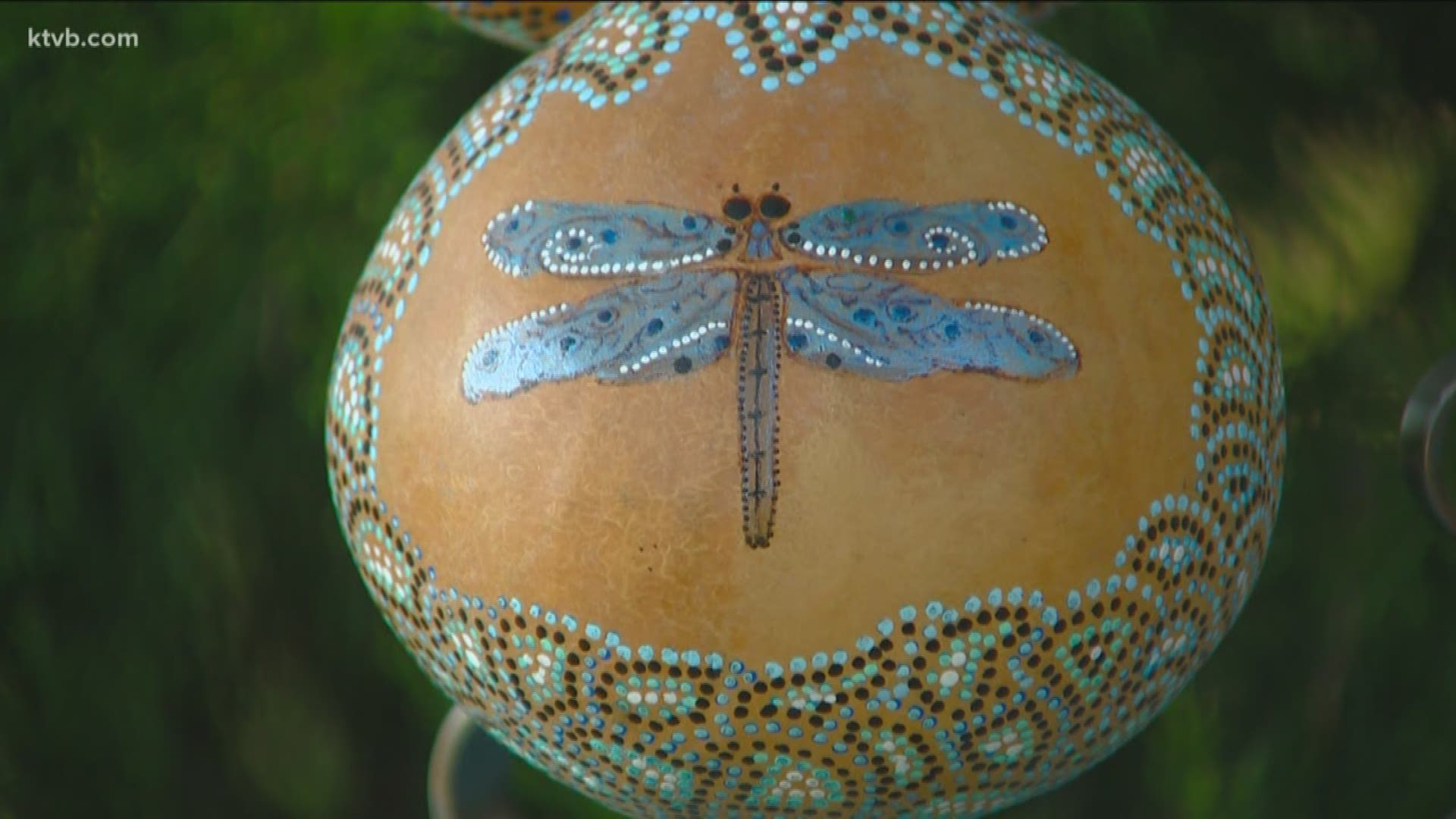BOISE, Idaho — Garden master Jim Duthie shows us something different that you might want to consider growing next year -- gourds!
They’re members of the squash family, and for the most part, people don’t eat them. But they can be used to make some very interesting and decorative art. And who knows? It might even become a new hobby for you.
Carla Arnold is growing something a little unusual in her backyard garden. But she won’t be eating her harvest. Instead, she’ll be turning it into art.
Not everything in your garden has to be edible. You might want to grow something just for fun, like these gourds.
“The wonderful part about gourds is they’re so natural.”
Gourds are one of the earliest domesticated plants, and they’ve been used for food, tools, artwork and musical instruments for thousands of years.
“You’re working with natural materials,” said Arnold.
“You can paint them. This one was all done with acrylic paint.”
“I’ve got a Hawaiian tapa pattern going on here, and it’s wood burned. You can do anything you like to a gourd.”
Among Carla’s favorites are these extra-long handled dipper gourds, which she trains to grow into various shapes and art forms in a process called manipulation.
“This is around a horseshoe, and I wrapped it around several times here.”
“I started out when this one was about this big. And I began by wrapping it around this piece of cholla.”
Since the base of the gourd is filled with water, it can weigh up to 25 pounds or more, so it needs to be supported by cloth slings.
Carla’s even been able to manipulate gourds to grow into tied knots.
“This is a double knot. This took quite a bit of wrapping and persuading this ball to go through that tiny opening. The last time was a tough one but it got through and it turned out just beautiful.”
Gourds grow quickly, so you have to start when the gourds are very small. Gourd blossoms only open up at night, so they rely on night pollinators.
“These are female blossoms. So you can see the baby gourd is right behind the blossom, and this one was pollinated last night, and then this one was pollinated the night before last night, so you can see how much it’s grown in one day.”
“This guy’s about two days old, and so that’s where I start making my knot. then the weight of the ball will pull it down.”
Carla’s been doing gourd manipulation like this for two years now, and even won a national award for one of her creations.
“This is a double antler.”
“I won the Jim Story contest in Idaho with this gourd. And it’s an extra-long handled dipper and I manipulated it around an antler.”
“And then I entered it in the National American Gourd Society contest, and I won the national award. So, my 15 minutes of fame. Ta-da!”
Once they’ve been harvested, gourds will naturally dry out on their own, like this large kettle gourd. The distinctive pattern is a natural effect of mold on the gourd’s skin.
“This hasn’t been touched, so with a little oil or any kind of a finish, it’ll just be gorgeous.”
Another curing method is called green cleaning, where the green skin is carefully scraped off with a dull knife, to reveal the woody exterior below.
“I green cleaned this yesterday. and I’m not quite finished.”
And the results are nothing short of amazing.
“These are made of wood, and so the attraction for me and a lot of gourd artists are all the things that you can do with these containers.”
Gourd seeds are available in most garden centers and in seed catalogs. And did you know that there is a local organization for gourd enthusiasts? Who knew?! The Idaho Gourd Society has about a hundred members. They’re hosting a gourd festival on October 26th and 27th. So if you have interest in learning more about gourds and gourd art, you’ll find more information on their website.
Watch more 'You Can Grow It':
See them all on our YouTube playlist here:

